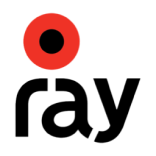The Future of Remote Patient Monitoring: Integrating AI and IoT for Better Healthcare
In recent years, remote patient monitoring (RPM) has emerged as a transformative force in healthcare. It enables healthcare providers to track and manage patients' health data from a distance, improving both the convenience and quality of care. With the integration of AI health analytics and IoT healthcare applications, the future of RPM is looking brighter and more promising than ever. In this blog post, we will explore how these technologies are revolutionizing RPM and what the future holds for healthcare delivery.
The Evolution of Remote Patient Monitoring
Traditionally, patient monitoring involved in-person visits to clinics and hospitals, where doctors would assess vitals and other important health data. RPM has changed this model by leveraging digital devices to continuously track patient health outside of clinical settings. Wearable devices, sensors, and mobile apps can collect data such as heart rate, blood pressure, glucose levels, and oxygen saturation, sending it directly to healthcare providers for real-time monitoring.
This continuous flow of data allows for earlier detection of potential health issues, reducing hospital readmissions, enhancing chronic disease management, and empowering patients to take charge of their own health. However, the true potential of RPM is only beginning to unfold with the integration of artificial intelligence (AI) and the Internet of Things (IoT).
The Role of AI in Health Analytics
AI health analytics is at the forefront of RPM advancements, using machine learning algorithms to analyze vast amounts of patient data in real-time. AI not only processes this data more efficiently than humans but also identifies patterns and trends that might otherwise go unnoticed. With predictive analytics, AI can forecast potential health risks and complications, enabling preventive measures to be taken before issues escalate.
For example, AI-driven RPM systems can detect subtle changes in heart rate variability or respiratory patterns in patients with chronic conditions, flagging early warning signs of deterioration. This allows healthcare providers to intervene proactively, preventing hospitalizations and improving patient outcomes.
Moreover, AI can personalize healthcare plans by analyzing individual patient data and recommending tailored treatments or lifestyle changes. This level of precision medicine is a game-changer, especially for managing chronic diseases like diabetes, hypertension, and respiratory disorders.
IoT Healthcare Applications: Connecting Devices for Smarter Care
IoT healthcare applications are critical in expanding the capabilities of RPM by connecting a network of smart medical devices that communicate with each other and healthcare systems. IoT devices include wearable sensors, implantable monitors, and even smart home devices that track everything from medication adherence to sleep patterns.
These devices generate vast amounts of data that are continuously collected and transmitted to cloud-based platforms where they are analyzed and shared with healthcare professionals. With IoT, RPM moves beyond simply collecting data to creating an interconnected healthcare ecosystem where devices, patients, and providers can all engage in real-time communication.
One exciting application of IoT in healthcare is the use of smart homes for elderly patients. Sensors embedded in the home can monitor a patient’s movements, detect falls, and track vital signs, all while sending alerts to caregivers or medical professionals. This level of monitoring allows seniors to maintain independence while ensuring that they are safe and receiving timely care.
The Benefits of AI and IoT Integration in Remote Patient Monitoring
The integration of AI and IoT in RPM holds enormous potential for improving healthcare outcomes. Some of the most significant benefits include:
1. Early Detection of Health Issues: AI's ability to analyze real-time data from IoT devices allows for early detection of potential health problems, enabling timely interventions that can prevent serious complications.
2. Improved Chronic Disease Management: RPM systems that use AI-driven analytics can optimize treatment plans and track patients’ adherence to therapies, helping manage chronic conditions like diabetes and heart disease more effectively.
3. Reduced Hospitalizations and ER Visits: By monitoring patients remotely and intervening early when necessary, RPM can significantly reduce the need for hospital readmissions and emergency room visits.
4. Enhanced Patient Engagement: With the integration of IoT, patients are empowered to take a more active role in managing their health. Smart devices and apps provide real-time feedback and reminders, improving compliance with treatment plans.
5. Personalized Care: AI can tailor healthcare recommendations based on individual patient data, leading to more personalized and effective treatments.
Challenges and the Road Ahead
Despite the potential of AI and IoT in RPM, there are still challenges to be addressed. Data privacy and security remain top concerns, as the vast amount of sensitive health data generated by IoT devices needs to be protected from cyber threats. Additionally, there are concerns about the interoperability of devices and systems, as many IoT devices are not yet standardized, making integration difficult.
However, as technology advances and regulatory frameworks evolve, these challenges are likely to be overcome. The combination of AI and IoT in RPM is expected to continue reshaping healthcare, making it more efficient, proactive, and patient-centered.
Conclusion
The future of remote patient monitoring lies in the seamless integration of AI health analytics and IoT healthcare applications. These technologies are driving a shift from reactive to proactive healthcare, enabling earlier interventions, personalized care, and better outcomes for patients. As AI and IoT continue to evolve, we can expect RPM to play an increasingly important role in improving healthcare delivery and transforming how patients and providers interact.
In the years to come, the healthcare landscape will be defined by smarter, more connected systems that put patient well-being at the center of care, creating a healthier and more efficient future for all.
